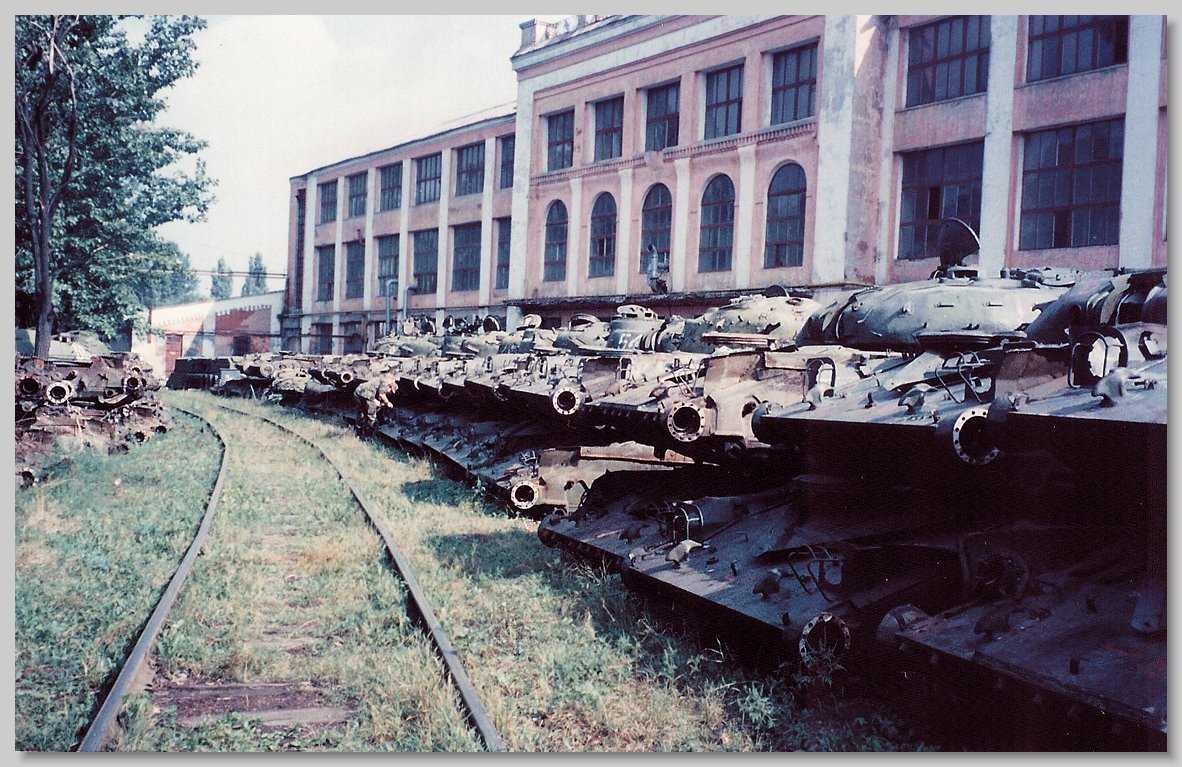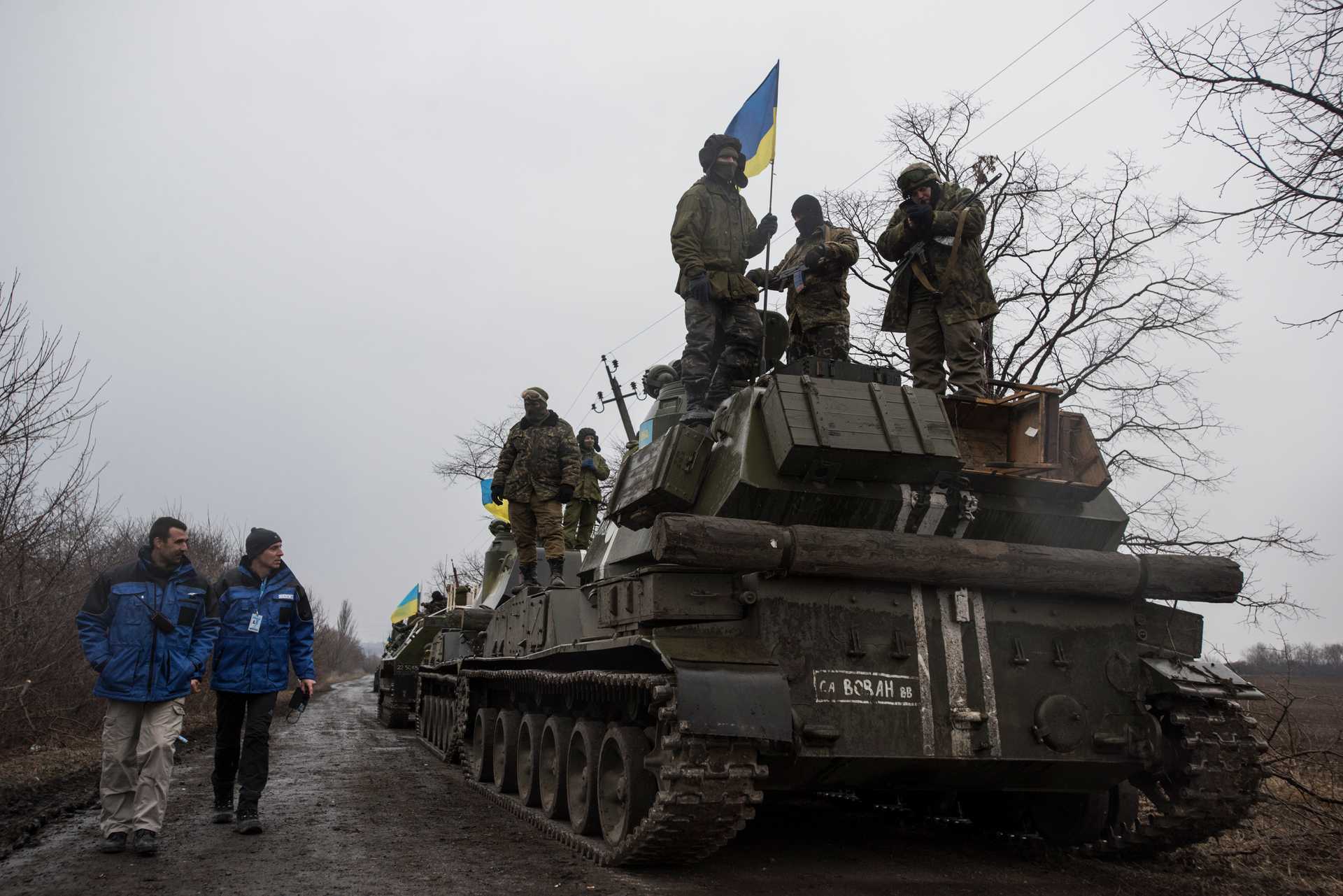This chapter will present the history of the emergence, development and demise of the European arms control system, starting with its Cold War origins and finishing with the consequences of the full-scale Russian attack against Ukraine launched in 2022.
Cold War origins
During the Cold War, almost the whole of Europe was seen as a potential battleground for the conflict between the Soviet Union-led Warsaw Pact and US-led NATO. Especially during the 1950s and 1960s, heightened Cold War tensions between the United States and the Soviet Union meant that both sides were deeply distrustful and committed to achieving military superiority in Europe, rather than engaging in arms control.
Map showing member states of NATO and Warsaw Pact
Data: Natual Earth. Graphic: PRIF
Millions of soldiers and hundreds of thousands of pieces of weaponry were deployed by all sides. In addition to conventional weapons, thousands of warheads for so-called non-strategic or tactical nuclear weapons were stationed on the territory of European states.
However, by the 1970s, a shift toward détente, or easing of international tensions, provided opportunities for arms control and risk reduction as both sides recognised the mutual benefits of reducing the risk of conflict. In Europe, détente was pursued through the Conference on Security and Cooperation in Europe. After another phase of tensions during the early 1980s, including the so-called Euromissiles crisis over the deployment of a new generation of Soviet intermediate-range nuclear armed missiles in Europe and NATO’s counter-deployment of ballistic and cruise missiles, political changes in the Soviet Union paved the way for the emergence of a European system of arms control in the last stages of the Cold War. It was originally aimed at managing the confrontation between the two blocs, NATO and the Warsaw Pact, to minimise the threat of a major war and build trust between the parties, but was then adopted to support political changes on the continent, including the demise of the Soviet Union.1
Role of arms control in transforming European security in the 1990s
After 1989, arms control measures proved very important in securing a largely peaceful transformation of the European security order. The post-Cold War European arms control system used a combination of different instruments and procedures. The two main legally binding ones were the (with subsequent modifications) and the . European countries, the United States and Canada also agreed to implement a politically binding set of confidence- and security-building measures to increase the transparency of their military doctrines and actions in Europe. Lastly, the United States and Russia made a number of unilateral pledges to significantly reduce their stockpiles of tactical nuclear weapons.
As a consequence, tens of thousands of tanks, artillery pieces and other heavy weapons were verifiably destroyed in the 1990s. The armed forces of former enemies started to share information and cooperate on an unprecedented scale.

After the bloody conflicts in the Western Balkans, in which heavy weapons were widely used, the 1995 Dayton Peace Agreement included provisions for the establishment of a sub-regional conventional arms control regime. As a result, more than 1,000 pieces of heavy weaponry were destroyed in Serbia, Croatia, Montenegro and Bosnia and Herzegovina.
Crisis of European arms control in the 2000s
There were three main reasons for the current and still unresolved crisis of the European arms control system, which started in the early 2000s.
First, arms control measures such as the CFE Treaty were good at strengthening stability, but much less effective as instruments of conflict resolution. Countries engaged in fighting on their own territory, for example Russia in Chechnya, or in interstate conflicts (e.g. Armenia and Azerbaijan) did not want to restrain their forces. Nor did they want to provide detailed information about their military planning and stockpiles.
Second, when the major conventional arms reductions were completed, the arms control regime started operating below the radar of most European decision-makers. The limitations on numbers of tanks or the formality of the information exchange and inspection regimes seemed out of synch with more urgent security issues, such as the fight against terrorism or non-proliferation of weapons of mass destruction. The system also did not take into account or respond to the development of new weapons and changes in military doctrines.
Third, political relations between Russia and the West deteriorated, and a weakened arms control system was not able to prevent the return of confrontation. The CFE Treaty was modified in 1999 to reflect the changes resulting from NATO enlargement to the East, but its ratification was not completed, as Russia’s Western partners expected it would first withdraw its forces from Moldova and Georgia. In response, Russia suspended implementation of the CFE in 2007. There were also cases of selective implementation or circumvention of adopted confidence-building obligations, for example by Russia organising massive ‘snap’ exercises, which do not have to be announced in advance. The INF Treaty collapsed in 2019 after the US accused Russia of violating the Treaty by developing an intermediate-range cruise missile, and the US and subsequently Russia withdrew from the Open Skies Treaty in 2021.
Impact of Russia’s war on Ukraine
In as early as 2014 and 2015, the Russian takeover of Crimea and the military confrontation between Ukraine, the separatist forces and Russia in eastern Ukraine exposed serious deficiencies in the system. Risk reduction procedures contained in the Vienna Document and Open Skies Treaty were initiated, but they had little or no restraining effect on the developments on the ground.

The situation repeated itself in the run-up to the full-scale Russian invasion of Ukraine in February 2022, with Vienna Document risk reduction procedures triggered by Ukraine and a number of its partners, but ultimately blocked by Russia. There were fundamental factual disagreements between Russia, on the one hand, and Ukraine and NATO states, on the other, about the presence of Russian troops and equipment inside eastern Ukraine and the concentration of Russian forces in the vicinity of the country. These were not resolved through the existing arms control, risk reduction and verification measures.2
The Russian invasion itself can be seen as the most glaring failure of the European arms control system, designed to prevent the large-scale concentration of military forces and attack against a weaker opponent.
As one of the consequences of the war and the sharp increase of tensions in Europe, several European states have taken the decisions to increase their defence budgets and acquire additional weapons systems and capabilities.
Military expenditure in Europe, 1991–2023 (in const. 2021 USD prices and exchange rates, except for the last figure which is in USD at 2022 prices and exchange rates).
Data: SIPRI Military Expenditure Database, Graphic: PRIF
Russian military expenditure 1992–2022 (in const. 2022 USD)
Data: SIPRI Military Expenditure Database, Graphic: PRIF
In the national strategies as well as NATO documents, the emphasis was on augmenting deterrence needs, with arms control and risk reduction seen as ‘complementing’ these efforts.
Given the direct responsibility of NATO countries for fuelling the Ukraine conflict, as well as the accession of Finland to the alliance and the ongoing consideration of a similar application by Sweden, even the formal preservation of the CFE Treaty has become unacceptable from the standpoint of Russia’s core security interests.
The Ministry of Foreign Affairs of the Russian Federation
The final withdrawal of Russia from the CFE Treaty, which took effect in November 2023, was justified by the assessment that it is no longer in line with Russia’s interests. In response, 22 NATO countries decided, in November 2023, to suspend the operation of the CFE Treaty ‘for as long as necessary’, a position shared by Ukraine. In April 2024, Türkiye joined other NATO countries in suspending the CFE, and in May 2024 Belarus also suspended its participation in the Treaty.
Summary
The efficiency and importance of European arms control and its system of interlocking agreements and instruments is closely connected to the political, strategic and military developments in the Euro-Atlantic space. In the 1990s, the system performed well due to the approximation of security interests of most European countries and the United States. Its crisis reflected rising tensions in Europe. Arms control limitations and transparency measures were increasingly seen as obstacles, especially by Russia, which aimed to reassert its position in the European security system.
- 1975
Helsinki Final Act
Agreed by 35 states from Western and Eastern blocs, as well as non-aligned countries, the package included some basic confidence-building measures such as pre-notification of large exercises.
- 1986
Stockholm Document
The first comprehensive politically binding document to stipulate a range of CSBMs in Europe, followed by the 1990 Vienna Document.
- 1987
INF Treaty
An agreement between the United States and the Soviet Union to eliminate ground-launched ballistic and cruise missiles with ranges of between 500 and 5,500 km.
- 1990
CFE Treaty
Described as the cornerstone of European security, the Treaty on Conventional Armed Forces in Europe established numerical limits and verification measures for five categories of weapons: tanks, armoured combat vehicles, heavy artillery, combat aircraft, and attack helicopters.
- 1992
Open Skies Treaty
This agreement, which entered into force in 2002, allows for other participants to conduct observation flights over the entire territory over which a state party exercises sovereignty, with the aim of improving openness and military transparency.
- 1999
CFE Adaptation
A significant update or adaptation of the CFE Treaty, which established new national and territorial equipment limits, but never entered into force.
- 2007
CFE suspension by Russia
Russia decided to no longer abide by treaty limits and accept inspections, citing the failure of other states to ratify the Adapted CFE Treaty.
- 2011
Vienna Document update
The last modification and collation of a broad range of confidence-building and risk reduction measures agreed by the OSCE participating states.
- 2019
End of the INF Treaty
The United States formally withdrew from the INF Treaty, citing Russian non-compliance (testing and developing a prohibited intermediate-range missile), as well as concerns over China’s growing missile arsenal.
- 2020
US withdrawal from the Open Skies Treaty
Based on its assessment of repeated Russian violations, the Trump administration announced the US withdrawal from the Treaty in May 2020. The withdrawal took effect on 22 November 2020.
- 2021
Russian withdrawal from the Open Skies Treaty
Immediately following the US withdrawal, Russia moved to pull back from the treaty, and its withdrawal became effective in December 2021.
- 2023
Russian withdrawal from the CFE
In May 2023, the Russian parliament, acting on a government initiative, decided to fully withdraw from the CFE Treaty, pointing to the change of security situation caused, inter alia, by NATO activities and enlargement.
- 2023
Decision on CFE suspension by NATO states
Responding to Russia’s withdrawal, 22 NATO states – parties to the CFE Treaty – announced their intention to suspend the operation of the Treaty ‘for as long as necessary’, adding that ‘a situation whereby Allied States Parties abide by the Treaty, while Russia does not, would be unsustainable’.
Footnotes
-
For an analysis of the historical stages of the development of European arms control and the links to political processes in Europe, see, e.g.: Alexander Graef, Beyond Stability: The Politics of Conventional Arms Control in Europe, Zeitschrift für Friedens- und Konfliktforschung 10 (2), 2022, https://link.springer.com/article/10.1007/s42597-022-00070-y ↩
-
See Hernández, Gabriela Iveliz Rosa. 2024. “Whither Conventional Arms Control in Europe?”, in: Friesendorf, Cornelius/ Kartsonaki, Argyro (eds): OSCE Insights, Nomos, Baden-Baden. ↩